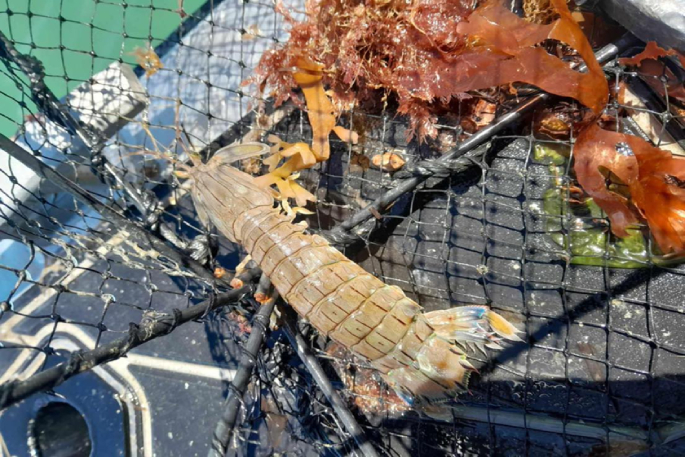The Japanese mantis shrimp (Oratosquilla oratoria) has been detected for the first time in the Bay of Plenty region.
As part of Toi Moana Bay of Plenty Regional Council’s Asian paddle crab trapping programme, which is currently being undertaken in Tauranga Harbour by Manaaki Te Awanui, a single Japanese mantis shrimp was captured in one of the traps near Ōmokoroa.
The species were first reported in New Zealand in Kaipara Harbour, Northland, in 2010. The closest known location to the Bay of Plenty where they have been identified is Thames Harbour. It is not known how the shrimp came to be in the Tauranga Harbour but it is possible that it may have migrated by natural spread.
"Bay of Plenty Regional Council marine biosecurity staff have formally identified the species," a council spokesperson said. "Initial investigations are underway and staff will be assessing next steps for a response plan over the coming days.
"If you think you have seen this pest, please contact the Bay of Plenty Regional Council on [email protected]"
The council is asking the community to help prevent the spread of marine pests doing the following:
- Clean and dry any marine equipment (e.g. ropes, lines and pots) before using these in a new area.
- Inspect areas on your boat that retain water for signs of marine life.
- Check for aquatic weeds tangled around anchors, trailers and other equipment.
- Keep your boat bottom and any niche areas clean (no more than light slime, all the time).
- Check your hull before you travel to a new area, every time.
- If your boat is heavily fouled, haul it out. Cleaning underwater will only spread any pests that may be hiding on there.
 Japanese mantis shrimp. Photo / Dr S. Ahyong.
Japanese mantis shrimp. Photo / Dr S. Ahyong.
What does it look like?
Japanese mantis shrimp are light grey and can grow up to 18.5cm long. They have two spiny claws used to capture food. Japanese mantis shrimp can easily be confused with a native species that is of similar size and colour. However, Japanese mantis shrimp have thin red-maroon lines running down the length of its body and the outer surface of the tail fan is blue and yellow (it is grey and yellow in the native species) as opposed to the thicker red-maroon mid line found on the native mantis shrimp (Heterosquilla tricarinata).
Japanese mantis shrimp live in burrows in soft sediments, sand and mud in sheltered bays and estuaries. It is native to the north-western Pacific where it is most common in temperate waters of China and Japan.
Environmental impacts
The Japanese mantis shrimp preys on shrimps, crabs and thin-shelled molluscs, and can alter habitats through its burrowing activities. When abundant, they can play a role in structuring benthic communities and may compete for food and space with other crustaceans.



1 comment
Japanese mantis shrimp 🍤
Posted on 30-11-2024 15:05 | By David Riddington
Are they edible 🤔🤤 I'm thinking garlic 🧄 butter 🧈.
Leave a Comment
You must be logged in to make a comment.